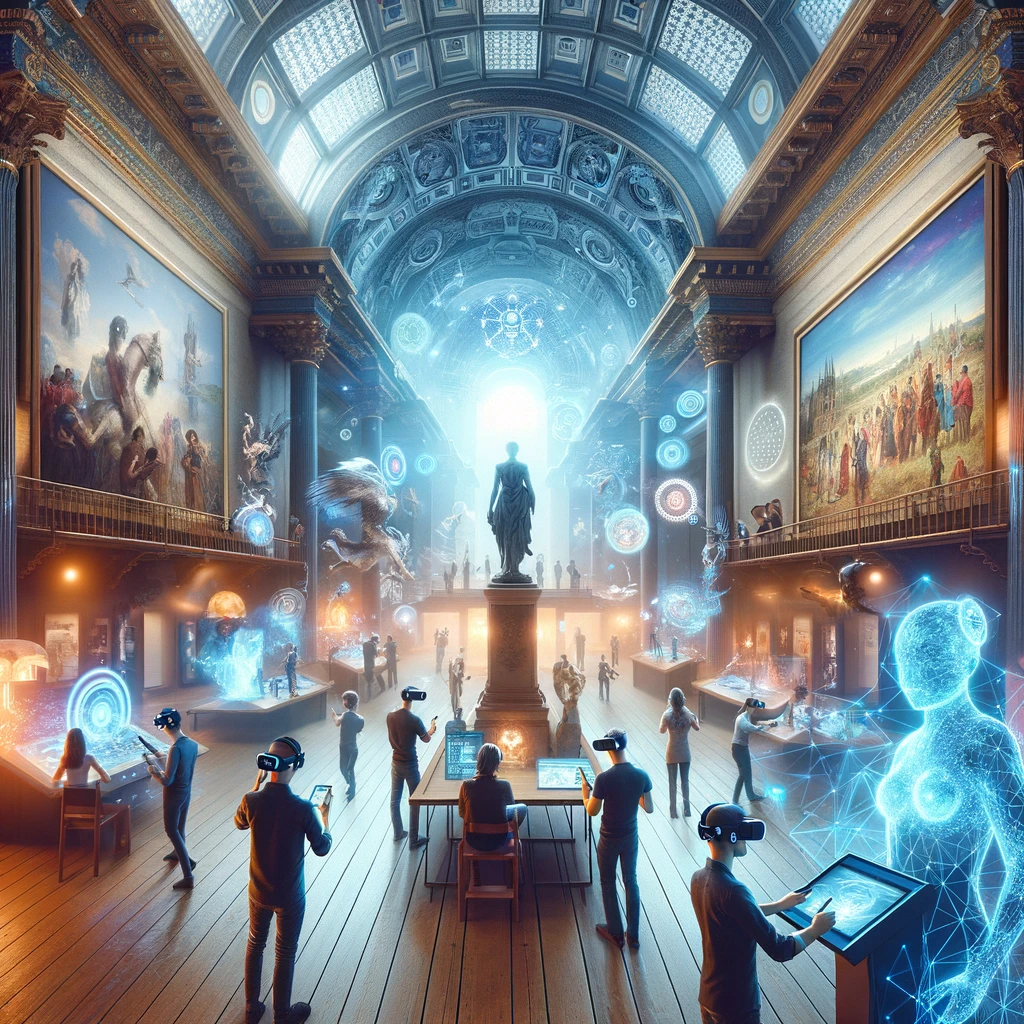Virtual reality (VR) and augmented reality (AR) are technologies that have the potential to revolutionize the way we experience museums and cultural sites. By using VR and AR, museums and cultural sites can expand the reality of their exhibits and provide visitors with immersive, interactive experiences that go beyond what is possible in the physical world.
One way that technology can be used to expand the reality of museums and cultural sites is by creating VR and AR experiences that allow visitors to explore and interact with exhibits in new and innovative ways. For example, a VR exhibit could allow visitors to virtually visit a historical site or explore an ancient artifact from all angles, while an AR exhibit could provide visitors with additional information or context about an exhibit as they walk through a museum.
Heritage Innovation Marketplace is an online platform that connects people with a wide range of cultural heritage items, including traditional crafts, artwork, and other items that are unique to different cultural groups. By partnering with museums and cultural sites, the Marketplace could help to expand the reality of these institutions by providing access to VR and AR experiences that allow visitors to explore and interact with exhibits in new and innovative ways.
In conclusion, VR and AR have the potential to revolutionize the way we experience museums and cultural sites by expanding the reality of these institutions and providing visitors with immersive, interactive experiences. By using technology to create VR and AR experiences, museums and cultural sites can provide visitors with a deeper understanding and appreciation of their collections and help to preserve and celebrate the diversity of cultural heritage.
***
VR and AR in Museums: A Case Study on Using Technology to Enhance Cultural Experiences
What are VR and AR?
VR (virtual reality) and AR (augmented reality) are technologies that allow users to experience immersive and interactive environments. VR typically involves the use of specialized headsets and other equipment to create a fully immersive experience, while AR involves the overlay of digital content on the real world.
How are VR and AR used in museums?
VR and AR are increasingly being used in museums to enhance cultural experiences and bring exhibits to life. For example, museums may use VR to create immersive replicas of historical sites or events, or to allow visitors to experience cultural traditions in a more interactive way. AR can be used to provide additional information and context for museum exhibits, or to create interactive experiences that engage visitors in new ways.
Case study: Using technology to enhance museum experiences
One way that VR and AR can be used to enhance museum experiences is through the use of museum guides. Museum guides are typically trained professionals who provide visitors with information and context for museum exhibits. By using VR and AR technology, museum guides can create more engaging and interactive experiences for visitors.
For example, consider the case of a museum dedicated to ancient Egyptian history. A museum guide could use VR technology to transport visitors to a replica of an ancient Egyptian market, allowing them to experience the sights and sounds of the time period in a more immersive way. The guide could also use AR technology to provide additional information and context for exhibits, such as overlaying information about specific artifacts on the display.
By using VR and AR technology, museum guides can create more engaging and interactive experiences for visitors, helping to bring museum exhibits to life and enhance cultural understanding.
Key takeaways:
VR (virtual reality) and AR (augmented reality) are technologies that allow users to experience immersive and interactive environments.
VR and AR are increasingly being used in museums to enhance cultural experiences and bring exhibits to life.
Museum guides can use VR and AR technology to create more engaging and interactive experiences for visitors, helping to enhance cultural understanding.
Cover: Image by Alan Warburton / © BBC / Better Images of AI / Plant / CC-BY 4.0

